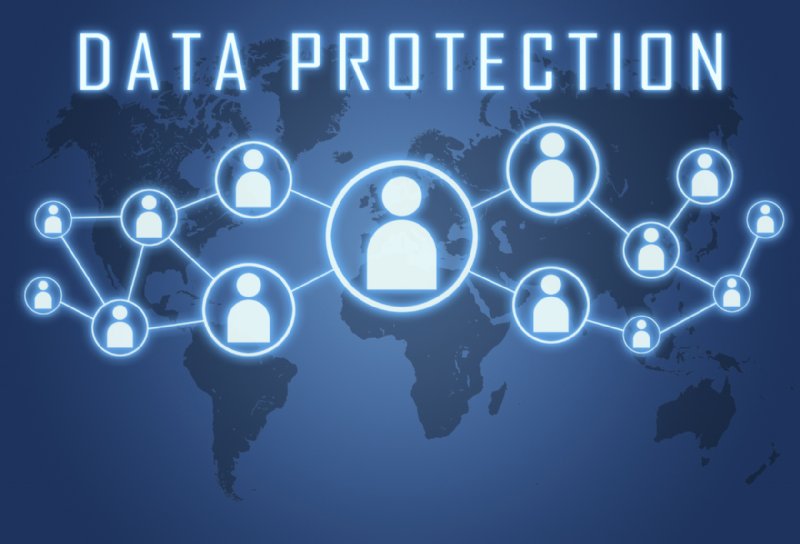In the digital age, where vast amounts of personal information are shared and stored online,
data protection and privacy have become major concerns for individuals and businesses
alike. As technology advances, so do the risks associated with unauthorized access and
misuse of sensitive data. Consequently, governments around the world have implemented
data protection and privacy laws to safeguard user information. In this blog, we will explore
the importance of data protection and privacy, discuss relevant laws, and provide essential
tips to protect user data effectively.
Understanding Data Protection and Privacy Laws
Data protection and privacy laws are designed to regulate the collection, storage,
processing, and sharing of personal data. These laws vary from country to country, but they
all share the common goal of safeguarding user information. Let’s take a look at some
prominent Data Protection and Privacy Laws
-
General Data Protection Regulation (GDPR)
The GDPR is a comprehensive data protection law that came into effect in the European
Union (EU) in 2018. It applies to organizations that process the personal data of individuals
residing in the EU, regardless of the organization. The GDPR emphasizes user consent, data minimization, purpose limitation, and transparency, and imposes hefty fines for
non-compliance.
-
California Consumer Privacy Act (CCPA)
The CCPA, enacted in 2020, is a state-level law in California, United States. It grants
California residents have certain rights regarding their personal information and impose
obligations on businesses that collect and process this data. The CCPA aims to enhance
user control over their data and requires businesses to provide clear privacy notices.
-
Personal Data Protection Act (PDPA)
The PDPA is a data protection law in Singapore that governs the collection, use, and
disclosure of personal data by organizations. It requires businesses to obtain user consent,
implement data protection policies, and establish mechanisms for individuals to access and
correct their data.
These are just a few examples of data protection and privacy laws, but it is crucial for
businesses and individuals to familiarise themselves with the specific laws applicable in their
jurisdiction.
Understanding How to Protect User Data?
User data, including personal and sensitive information, is a valuable asset that can be
misused if not adequately protected. Breaches can result in identity theft, financial loss,
reputational damage, and legal consequences. Therefore, organizations must prioritize the
protection of user data to foster trust, maintain a positive brand image, and comply with legal
requirements.
Importance of Protecting User Data
Protecting user Data is Essential for Several Reasons:
- Trust and Reputation: When individuals entrust their personal information to a business, they expect it to be handled with care. By prioritizing data protection and privacy, businesses
can build trust and maintain a positive reputation among their customers. - Legal Compliance: Failure to comply with data protection and privacy can result in
severe consequences, including hefty fines, legal penalties, and reputational damage. By
understanding and adhering to the relevant laws, businesses can avoid legal troubles. - Minimising Data Breaches: Data breaches can lead to significant financial losses,
identity theft, and reputational damage. By implementing robust data protection measures,
businesses can minimize the risk of data breaches and protect their users’ sensitive
information.
Essential Tips for Protecting User Data
Now that we understand the importance of data protection and privacy, let’s explore some
practical tips for effectively safeguarding user data:
- Implement Secure Data Storage and Encryption: Ensure that user data is stored in
secure databases or cloud platforms. Encrypt sensitive information to add an extra layer of
protection, making it harder for unauthorized individuals to access the data. - Obtain Explicit User Consent: Always obtain clear and explicit consent from users
before collecting their data. Provide transparent information about how the data will
be used, and allow users to opt out if they wish. - Regularly Update Security Measures: Keep your security systems and software up to
date to protect against evolving threats. Regularly patch vulnerabilities and conduct security
audits to identify and address any potential weaknesses. - Train Employees on Data Protection: Educate your employees about data protection
best practices, such as recognizing phishing attempts, maintaining strong passwords, and
handling sensitive data securely. A well-informed team is crucial for maintaining data
security. - Conduct Privacy Impact Assessments: Perform privacy impact assessments to identify
potential risks to user data and develop strategies to mitigate them. This process helps you
understand the privacy implications of your data processing activities and implement
necessary safeguards.
Strategies for Ensuring Compliance for Protecting User Data
Complying with data protection laws can be complex, but it is a necessary step for protecting
user data. This section will outline practical strategies and best practices that organizations
can implement to ensure compliance:
● Data Mapping and Inventory: Conduct a thorough assessment of all data
processing activities, identify the types of data collected and determine the lawful
the basis for processing.
● Consent Management: Implement a transparent consent mechanism, ensuring that
users are informed about the data being collected and obtain their explicit consent
before processing it.
● Data Minimization: Collect only the necessary data required to fulfill the intended
purpose and delete or anonymize data that is no longer needed.
● Security Measures: Implement robust technical and organizational security
measures to safeguard user data from unauthorized access, breaches, or accidental
loss.
● Staff Training and Awareness: Train employees on data protection principles, the
importance of privacy, and their role in maintaining compliance with data protection
laws.
● Vendor Management: Assess the data protection practices of third-party vendors
and ensure that contractual agreements include provisions for data protection and
privacy.
● Incident Response Plan: Develop a comprehensive plan to respond to data
breaches or security incidents promptly, including notifying affected individuals and
relevant authorities as required by law.
Also, Read This: PCNSE Exam Success Secrets: A Deep Dive into Palo Alto Networks Network Security
Conclusion
Data protection and privacy are paramount in today’s digital landscape. Adhering to data
protection and privacy laws is not only a legal requirement but also crucial for maintaining
customer trust and protecting sensitive information. By implementing robust security
measures, obtaining user consent, and staying informed about relevant laws, businesses
can effectively safeguard user data and contribute to a safer digital ecosystem. Remember,
protecting user data is a continuous process that requires ongoing efforts to adapt to
emerging threats and regulatory changes.









